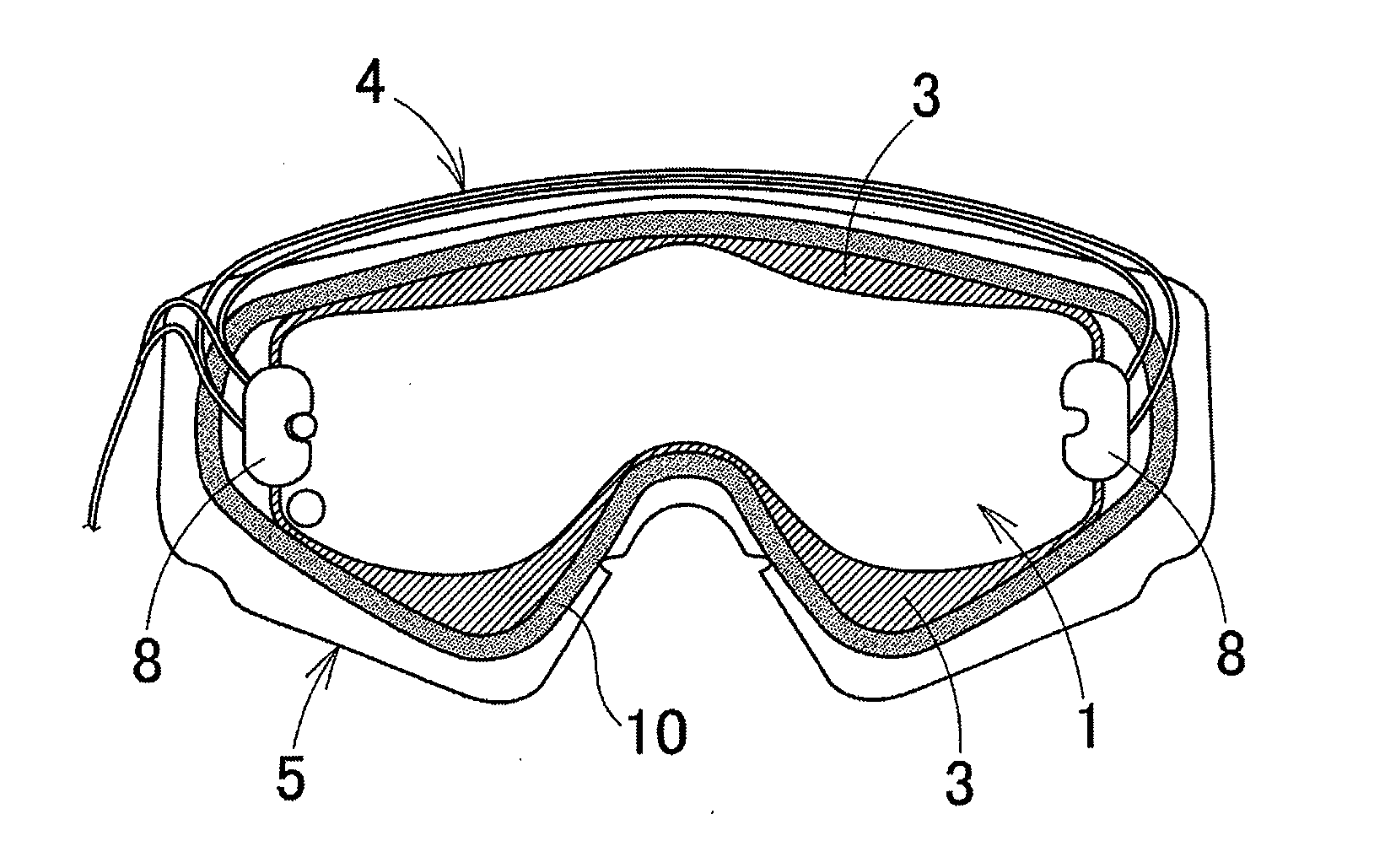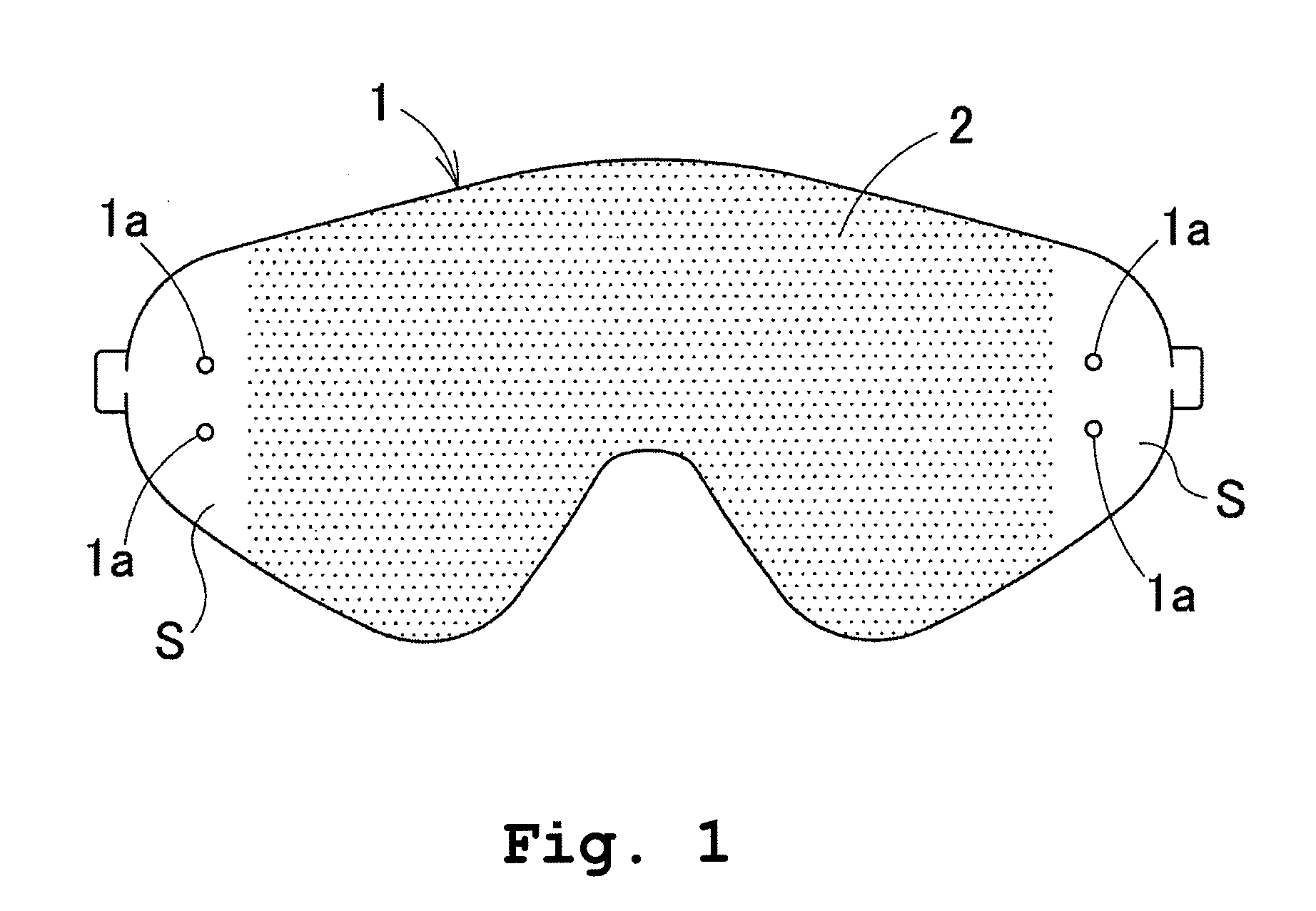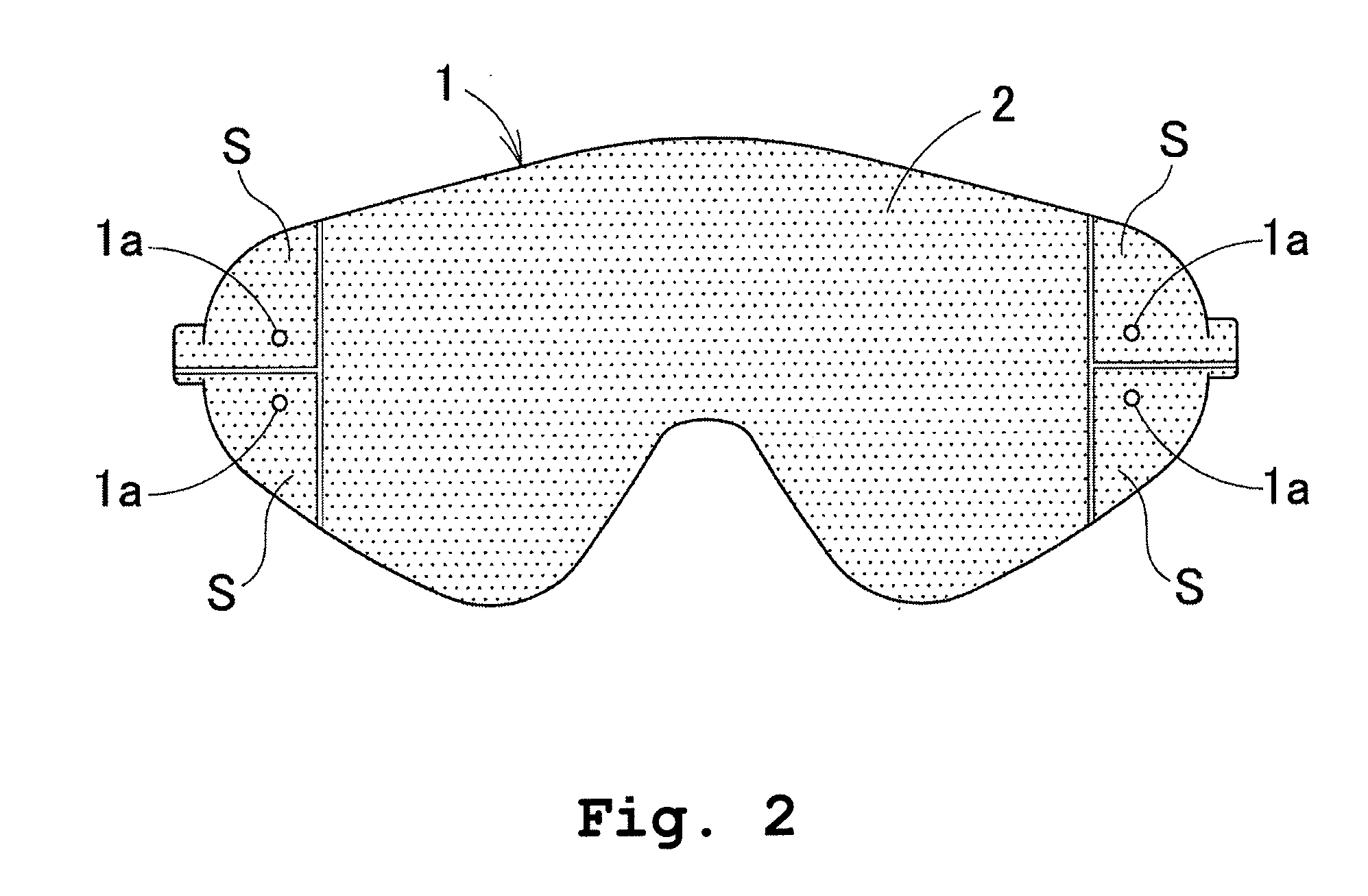Fog-resistant structure and protective device for eyes
a technology of protective device and structure, which is applied in the direction of protective garment, goggles, instruments, etc., can solve the problems of large power consumption, inconvenience of wearing, and significant difference in temperature between the face surface of the wearer and the lens or shield, so as to reduce the amount of wasted power consumption, simplify the structure, and reduce the effect of was
- Summary
- Abstract
- Description
- Claims
- Application Information
AI Technical Summary
Benefits of technology
Problems solved by technology
Method used
Image
Examples
example 1
[0051]A polycarbonate resin sheet (a thickness of 1 mm) whose surface was covered with anti-fog coating was punched out into a goggle-like lens shape. Masking was made on the reverse side of the lens covered with anti-fog coating, so as to extend within 20 mm from each of the opposite ends of the lens. Then, ITO sputtering was performed to form an ITO transparent conductive film with a film thickness of 190 nm and a surface resistance of 30 Ω / cm2.
[0052]Then, a linear conductive paste made of silver paste was disposed on the ITO transparent conductive film by silk printing. One of the two line shapes was a shape of a line along the inner circumference of the upper half of the outer circumference of the goggle lens with a line width varying from 1 to 5 mm; and the other one was a shape of a line along the inner circumference of the lower half thereof with a line width varying from 1 to 15 mm. The transparent conductive film portion interposed between the two lines formed a transparent...
PUM
 Login to View More
Login to View More Abstract
Description
Claims
Application Information
 Login to View More
Login to View More - R&D
- Intellectual Property
- Life Sciences
- Materials
- Tech Scout
- Unparalleled Data Quality
- Higher Quality Content
- 60% Fewer Hallucinations
Browse by: Latest US Patents, China's latest patents, Technical Efficacy Thesaurus, Application Domain, Technology Topic, Popular Technical Reports.
© 2025 PatSnap. All rights reserved.Legal|Privacy policy|Modern Slavery Act Transparency Statement|Sitemap|About US| Contact US: help@patsnap.com



